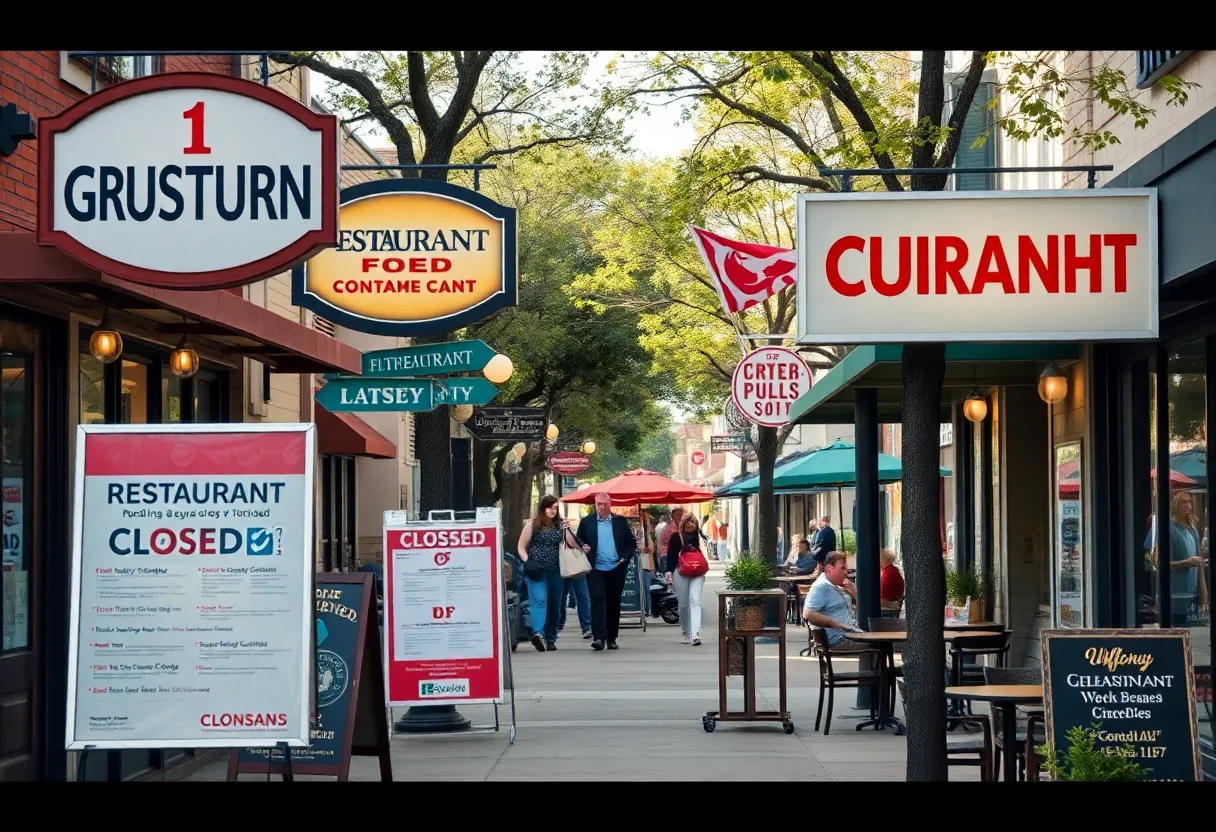News Summary
Austin is experiencing a wave of restaurant and grocery store closures, reflecting broader challenges in the culinary scene. Notable establishments like Thom Market and Royal Blue Grocer are shutting down, impacting local culture and economy. These closures are attributed to rising operational costs and landlord disputes, raising concerns about the future of Austin’s vibrant dining options. As community members face job losses and a potential shift in neighborhood identities, the need for support and revitalization efforts becomes urgent.
Austin is currently facing significant turmoil within its culinary scene, as multiple restaurants and grocery stores have closed or announced their impending closures in 2024. This wave of closures isn’t merely an isolated event but appears to reflect broader challenges affecting dining and retail establishments in the area.
What Happened
A series of closures have hit Austin’s restaurants and grocery stores, with implications for the local culinary culture. Notable closures include:
- Thom Market, known for its locally sourced products, is shutting down all three of its locations after 18 years in business. A new brand is set to replace it shortly.
- The Royal Blue Grocer and its adjoining restaurant Wee Cozy Kitchen will close due to the landlord’s decision not to renew the lease after 15 years.
- A North Austin Brazilian pizza place that promoted an all-you-can-eat concept has also ceased operations after less than three years.
- The Southpark Meadows BBQ joint closed, with implications surrounding unpaid rent affecting the owners.
- Stixs and Stone, an Asian-Mexican restaurant with accolades, closed as its chef prepares for a new venture.
- Several other establishments, including Baby Acapulco and bacalar, the Yucatán-inspired restaurant, have also announced closures, marking the end of beloved venues.
Who Is Affected
The closures are impacting various stakeholders in Austin’s culinary scene, from restaurateurs to employees and patrons. Business owners, like the ones behind Thom Market, Royal Blue Grocer, and Salt & Time, find themselves having to navigate these turbulent waters, often struggling with rising operational costs and the burden of lease negotiations.
Employees are also directly affected, facing job loss and uncertainty in an already competitive job market for culinary professionals. Additionally, loyal customers of these establishments may feel a loss of community and familiarity as their favorite dining spots vanish.
Official Response
While specific government responses to these closures have not been highlighted, local leaders are likely aware of the situation. Furthermore, business owners have indicated that many of the closures stem from challenges such as rising costs, lease disputes, and a need for rent relief. This acknowledgment points to an urgent need for dialogues on better support systems for local businesses and community engagement.
Impact
The impact of these closures extends beyond just the immediate loss of dining options. There is a potential ripple effect on the local economy, tourism, and community culture. Vacant spaces may deter new businesses from entering the market, further complicating economic recovery efforts. The closures could also alter the identity of neighborhoods that thrive on their rich diversity of restaurants and cultural influences.
Moreover, the ongoing trend reflects a **broader struggle** within Austin’s restaurant and bar scene, characterized by an imbalance between operational costs and consumer spending patterns. As noted, establishments across the city, including cherished cafes like Patika Cafe and Revival Coffee, have succumbed to these pressures, which are indicative of a shifting market landscape.
What’s Next
Looking ahead, the future of Austin’s culinary scene remains uncertain. As new brands prepare to take the place of those that have closed, questions linger about whether these new establishments will face the same challenges. Adapting to the evolving market conditions will be crucial for both new and existing businesses.
Efforts to revitalize the local culinary landscape may necessitate changes in policies regarding leasing and support for small businesses to help mitigate financial burdens. As the community waits to see how the culinary scene unfolds in coming months, resilience and innovation will be key to the survival and revival of Austin’s beloved food culture.
Deeper Dive: News & Info About This Topic
HERE Resources
Community Rallies to Save Green Mesquite BBQ in Austin
Austin Prepares for Record Store Day 2024
Austin Welcomes New Dining Concepts: A Fusion of Flavors
SXSW 2025: Cultural Identity at Risk Amidst Corporate Influence
Austin: Party City Stores Stand Firm Amid Nationwide Closures
Austin’s Restaurant Scene Faces Major Changes with Closures
Austin Revitalizes Historic East Sixth Street
FAA Lifts Ground Stop at Austin-Bergstrom Airport Amid Staffing Concerns
Lubbock’s Economic Growth and New Developments
Southwest Airlines to Close Flight Attendant Bases in Austin
Additional Resources
- Eater Austin
- Wikipedia: Austin, Texas
- Austin American-Statesman
- Google Search: Austin restaurant closures 2024
- CultureMap Austin
- Google Scholar: Austin restaurants
- Eater Austin
- Encyclopedia Britannica: Austin Texas
- Austin Monthly
- Google News: Austin restaurant closings








